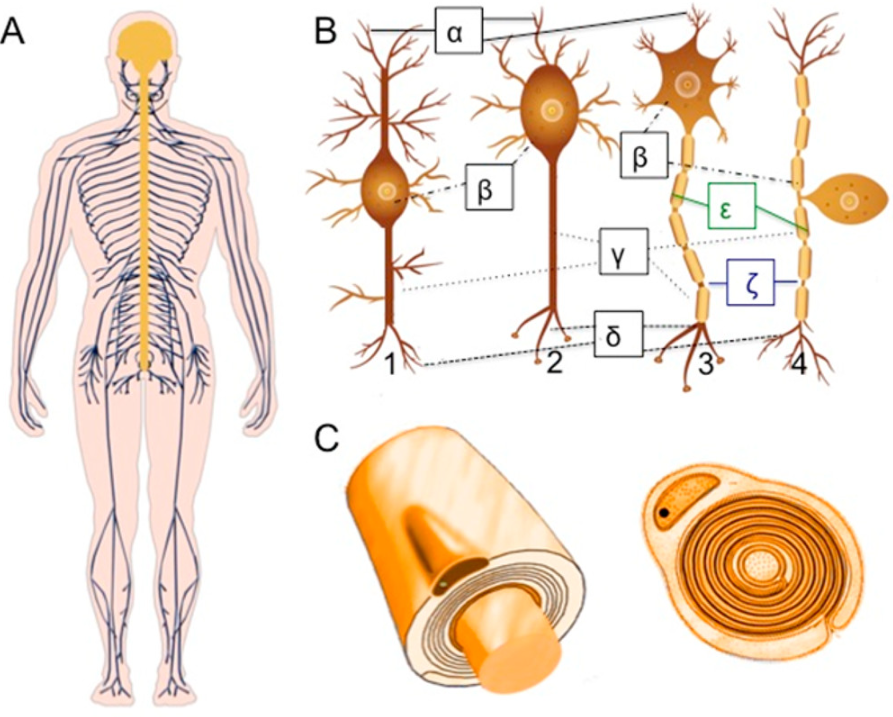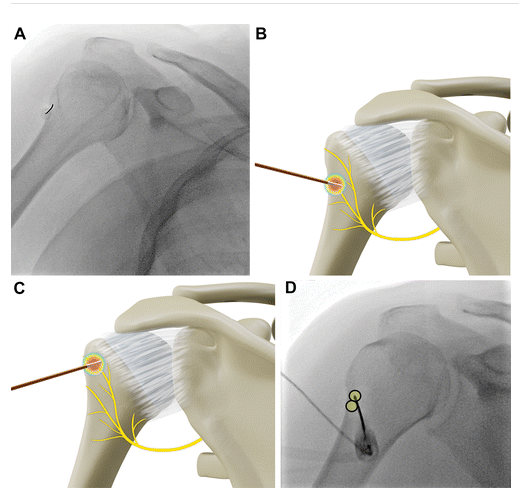Chronic pain can be a relentless enemy, stealing joy and crippling daily life. When conservative treatments like medication and physical therapy fail, nerve burning, also known as neurotomy or radiofrequency ablation (RFA), emerges as a potential option. But is burning a nerve truly a path to pain relief, or does it come with its own set of risks and drawbacks?
Explore the pros and cons of nerve burning to help you make informed decisions about your health. We’ll illuminate the science behind the procedure, its potential benefits, and the lurking shadows of side effects and complications. By the end, you’ll have a clear understanding of whether nerve burning is a beacon of hope or a flickering flame in your fight against chronic pain.
Understanding the Burn: How Nerve Burning Works
Nerve burning, in essence, targets the source of pain – the nerve itself. Using heat or radiofrequency waves, the procedure creates a lesion on the affected nerve, disrupting its ability to transmit pain signals to the brain. This “burn” can be temporary, lasting weeks or months, or permanent, depending on the technique used.
Pros: A Glimmer of Hope for Chronic Pain Sufferers

For some individuals struggling with chronic pain, nerve burning can be a game-changer. Here are some potential benefits:
- Pain Relief: Studies show that nerve burning can offer significant pain relief, particularly for certain types of chronic pain, such as trigeminal neuralgia (facial pain), facet joint pain, and pain from certain cancers.
- Minimally Invasive: Compared to open surgery, nerve burning is a minimally invasive procedure, often performed under local anesthesia. This translates to shorter recovery times, less risk of infection, and faster return to normal activities.
- Long-Term Relief: Depending on the technique and the underlying pain condition, nerve burning can offer long-term pain relief, lasting months or even years for some patients.
- Improved Quality of Life: By alleviating pain, nerve burning can significantly improve quality of life, allowing individuals to resume activities they once enjoyed and participate more fully in life.
Cons: The Shadows Lurking Within
However, nerve burning is not a magic bullet. It comes with its own set of drawbacks, which need careful consideration:
- Permanent Nerve Damage: While the goal is to create a temporary lesion, there’s a risk of permanent nerve damage, leading to numbness, weakness, or even paralysis in the affected area.
- Limited Effectiveness: Nerve burning is not effective for all types of pain. It’s crucial to discuss with your doctor whether it’s the right approach for your specific condition.
- Pain Recurrence: The pain relief provided by nerve burning may not be permanent. For some, the pain can return after some time, requiring repeat procedures.
- Complications: As with any medical procedure, there’s a risk of complications like bleeding, infection, and tissue damage.
Beyond the Binary: Weighing the Pros and Cons
Deciding whether or not to undergo nerve burning is a personal one, requiring careful consideration of both the potential benefits and the associated risks. Here are some factors to weigh:
- Severity and Type of Pain: Is your pain severe enough to warrant the risks of nerve burning? Is it a type of pain that responds well to this procedure?
- Failure of Conservative Treatments: Have you tried other treatments like medication, physical therapy, and injections without success?
- Potential Side Effects: Are you comfortable with the possibility of permanent nerve damage or other complications?
- Quality of Life Impact: How much is your pain impacting your daily life? Could nerve burning significantly improve your quality of life?
Open Communication: The Key to Informed Decisions
Ultimately, the decision to undergo nerve burning should be made in consultation with your doctor. Discuss your specific situation, concerns, and expectations openly and honestly. Your doctor can help you understand the risks and benefits in the context of your case and recommend the best course of action.
Beyond Burning: Exploring Alternative Pain Management Options
While nerve burning can be a valuable tool for some, it’s not the only option for managing chronic pain. Explore other potential avenues, such as:
- Physical therapy: Targeted exercises and stretches can strengthen muscles, improve flexibility, and reduce pain.
- Cognitive-behavioral therapy (CBT): This therapy can help you manage your pain through cognitive restructuring and relaxation techniques.
- Mindfulness meditation: Mindfulness practices can help you cultivate a sense of acceptance and reduce the emotional impact of pain.
- Pain management clinics: These clinics offer a multidisciplinary approach to pain management, combining medication, therapy, and other interventions.
Navigating the Labyrinth: A Deeper Dive into Nerve Burning Techniques

As we delve deeper into the realm of nerve burning, it’s crucial to understand the diverse techniques employed to target different types of pain. Each method comes with its own set of nuances, influencing its effectiveness and potential side effects. Let’s shed light on some of the most commonly used techniques:
Radiofrequency Ablation (RFA)
RFA, as mentioned earlier, utilizes radiofrequency waves to create a heat lesion on the targeted nerve. This minimally invasive procedure is often used for facet joint pain, sacroiliac joint pain, and certain neck and back pain conditions.
Pros:
- Outpatient procedure with minimal downtime
- High success rates for specific pain types
- Long-lasting pain relief (months to years)
Cons:
- Risk of permanent nerve damage, leading to numbness or weakness
- Not effective for all paint types
- Pain may recur over time
Cryoablation
This technique uses extreme cold, generated by liquid nitrogen or argon gas, to freeze and destroy the targeted nerve. Cryoablation is often used for trigeminal neuralgia, a debilitating facial pain condition.
Pros:
- Precise targeting, minimizing the risk of damage to surrounding tissues
- Effective for trigeminal neuralgia
- Less risk of permanent nerve damage compared to RFA
Cons:
- Requires general anesthesia
- Not as widely available as RFA
- May require repeat procedures for pain recurrence
Chemical Neurolysis
This method involves injecting alcohol or another chemical agent into the nerve to destroy it. Chemical neurolysis is typically used for smaller nerves and for pain originating from tumors or cancer.
Pros:
- Relatively simple and quick procedure
- Effective for pain from cancer or tumors
Cons:
- High risk of permanent nerve damage
- Not suitable for larger nerves
- Limited pain relief duration
Understanding the Nuances: Choosing the Right Technique
The choice of nerve-burning technique depends on several factors, including the type and location of your pain, your overall health, and your doctor’s expertise. Open communication with your doctor is key to determining the most suitable approach for your specific needs.
Beyond the Procedure: Managing Expectations and Side Effects
It’s essential to remember that nerve burning is not a cure-all. While it can offer significant pain relief for some, it’s not guaranteed to work for everyone. Managing expectations and understanding the potential side effects are crucial steps toward making informed decisions about this procedure.
Living with Nerve Burning: Coping Strategies and Support

If you choose to undergo nerve burning, it’s important to be prepared for recovery and potential side effects. Here are some tips for coping:
- Pain management: Work with your doctor to develop a pain management plan, including medication and physical therapy, to address any residual pain or discomfort.
- Support groups: Connecting with others who have undergone nerve burning can provide valuable emotional support and practical advice.
- Mindfulness and relaxation techniques: These practices can help you manage stress and anxiety, which can exacerbate pain.
- Focus on overall well-being: Prioritize self-care, healthy eating, and regular exercise to support your physical and mental health.
Remember, you are not alone in your journey with chronic pain. By exploring your options, making informed decisions, and implementing coping strategies, you can navigate the labyrinth of nerve-burning and find paths to a more pain-free and fulfilling life.
Resources and References
- American Academy of Pain Medicine: https://painmed.org/
- National Institute of Neurological Disorders and Stroke: https://www.ninds.nih.gov/
- Mayo Clinic: https://connect.mayoclinic.org/blog/adult-pain-medicine/tab/radiofrequency/
- Pain Foundation: https://uspainfoundation.org/programs/
Disclaimer: This article is for informational purposes only and should not be interpreted as medical advice. Always consult with your doctor to discuss your specific pain condition and treatment options.
6 Common FAQs about Nerve Burning
What is nerve burning?
Nerve burning, also known as neurotomy or radiofrequency ablation (RFA), is a medical procedure that uses heat or radiofrequency waves to damage or destroy a nerve. This disrupts the nerve’s ability to send pain signals to the brain, potentially providing pain relief.
What types of pain can nerve burning treat?
Nerve burning is most commonly used for chronic pain conditions that haven’t responded to other treatments, such as:
- Trigeminal Neuralgia: Severe facial pain affecting the trigeminal nerve.
- Facet joint pain: Pain in the small joints of the spine.
- Sacroiliac joint pain: Pain in the joint that connects the lower spine to the hip bone.
- Cancer pain: Pain caused by tumors or cancer treatment.
What are the benefits of nerve burning?
- Pain relief: Nerve burning can offer significant pain relief for some people, potentially improving their quality of life.
- Minimally invasive: Compared to open surgery, nerve burning is a minimally invasive procedure with shorter recovery times.
- Long-term effects: Depending on the technique and pain condition, nerve burning can provide long-term pain relief.
What are the risks and side effects of nerve burning?
- Permanent nerve damage: There’s a risk of permanent nerve damage, leading to numbness, weakness, or paralysis in the affected area.
- Limited effectiveness: Nerve burning isn’t effective for all types of pain.
- Pain recurrence: The pain may return after some time, requiring repeat procedures.
- Complications: Like any medical procedure, there’s a risk of complications like bleeding, infection, and tissue damage.
How do I know if nerve burning is right for me?
The decision to undergo nerve burning should be made in consultation with your doctor. They will consider your specific pain condition, other treatment options you’ve tried, and your overall health.
What are some alternative options for chronic pain management?
There are several alternative options for chronic pain management, including:
- Medication: Over-the-counter and prescription pain medications can help manage pain.
- Physical therapy: Exercises and stretches can strengthen muscles, improve flexibility, and reduce pain.
- Cognitive-behavioral therapy (CBT): This therapy can help you manage your pain through cognitive restructuring and relaxation techniques.
- Mindfulness meditation: Mindfulness practices can help you cultivate a sense of acceptance and reduce the emotional impact of pain.
- Pain management clinics: These clinics offer a multidisciplinary approach to pain management, combining medication, therapy, and other interventions.


